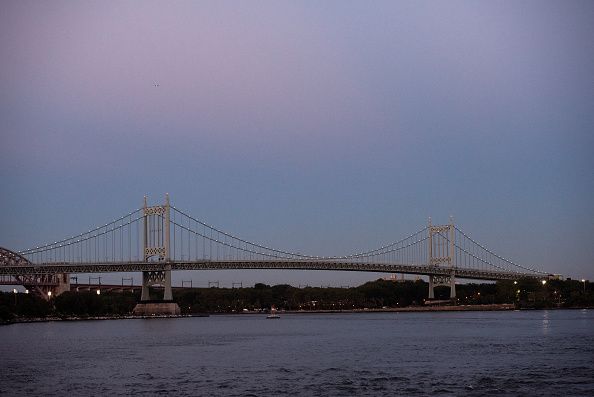
Thus, its design allowed the bridge to catch the wind and sway, which ultimately took it down. A contributing factor was its solid sides, not allowing wind to pass through the bridge's deck. In many undergraduate physics texts, the event is presented as an example of elementary forced resonance, with the wind providing an external periodic frequency that matched the natural structural frequency, the cause is still debated by engineers today. The bridge collapse had lasting effects on science and engineering. (Pacific time) possibly as a result of aeroelastic flutter caused by a 42 mph (68 km/h) wind. Its main span collapsed into the Tacoma Narrows four months later on November 7, 1940, at 11:00 a.m. The first Tacoma Narrows Bridge opened to traffic on July 1, 1940. Over 40 years later, tolls were reinstated as part of the financing of the twin span, and are presently collected only from vehicles traveling eastbound.
MAN JUMPS OFF TACOMA NARROWS BRIDGE 2021 PLUS
In 1965, the bridge's construction bonds plus interest were paid off, and the state ceased toll collection on the bridge. Tolls were charged on the bridge for the entire four-month service life of the original span, as well as the first 15 years of the 1950 bridge. The 19 bridges are as of 2017 the fifth-longest suspension bridge spans in the United States and the 43rd-longest in the world. Īt the time of their construction, both the 19 bridges were the third-longest suspension bridges in the world in terms of main span length, behind the Golden Gate Bridge and George Washington Bridge.
MAN JUMPS OFF TACOMA NARROWS BRIDGE 2021 SERIES
After a series of protests and court battles, construction began in 2002 and the new bridge opened to carry eastbound traffic on July 16, 2007, while the 1950 bridge was reconfigured to carry westbound traffic. Engineering issues, as well as the United States' involvement in World War II, postponed plans to replace the bridge for several years the replacement bridge was opened on October 14, 1950.īy 1990, population growth and development on the Kitsap Peninsula had caused traffic on the bridge to exceed its design capacity as a result, in 1998 Washington voters approved a measure to support building a parallel bridge.

The bridge became known for its pitching deck, and collapsed into Puget Sound the morning of November 7, 1940, under high wind conditions. Farquharson were hired to seek ways to stop the odd movements, months of experiments were unsuccessful. While engineers and engineering professor, F. B. The original bridge received its nickname "Galloping Gertie" due to of the vertical movement of the deck observed by construction workers during windy conditions.


The original Tacoma Narrows Bridge opened on July 1, 1940. Historically, the name "Tacoma Narrows Bridge" has applied to the original bridge nicknamed "Galloping Gertie", which opened in July 1940, but collapsed possibly because of aeroelastic flutter four months later, as well as the replacement of the original bridge which opened in 1950 and still stands today as the westbound lanes of the present-day two-bridge complex.

The bridges connect the city of Tacoma with the Kitsap Peninsula and carry State Route 16 (known as Primary State Highway 14 until 1964) over the strait. The Tacoma Narrows Bridge is a pair of twin suspension bridges that span the Tacoma Narrows strait of Puget Sound in Pierce County, Washington. Washington State Department of Transportation Tacoma to the Kitsap Peninsula United States


 0 kommentar(er)
0 kommentar(er)
